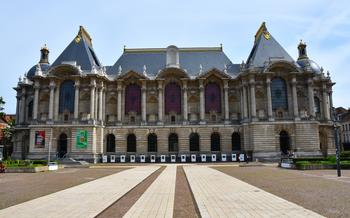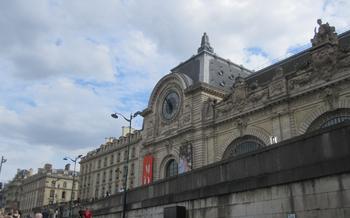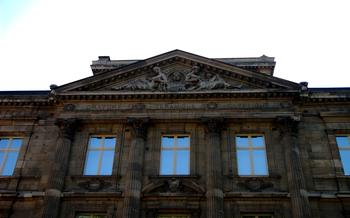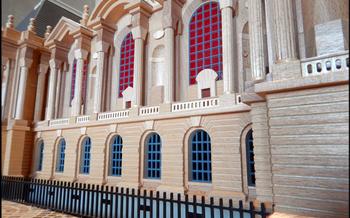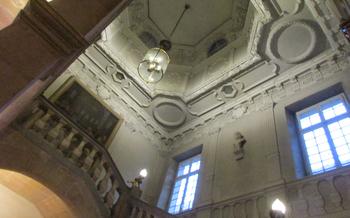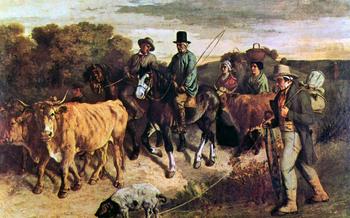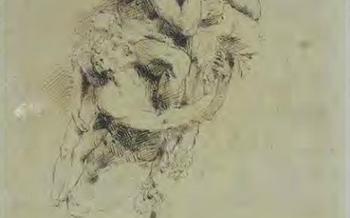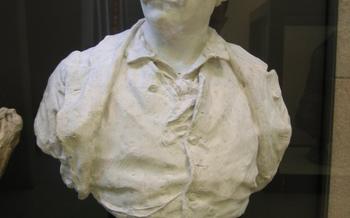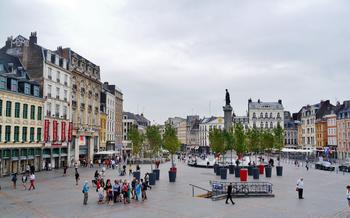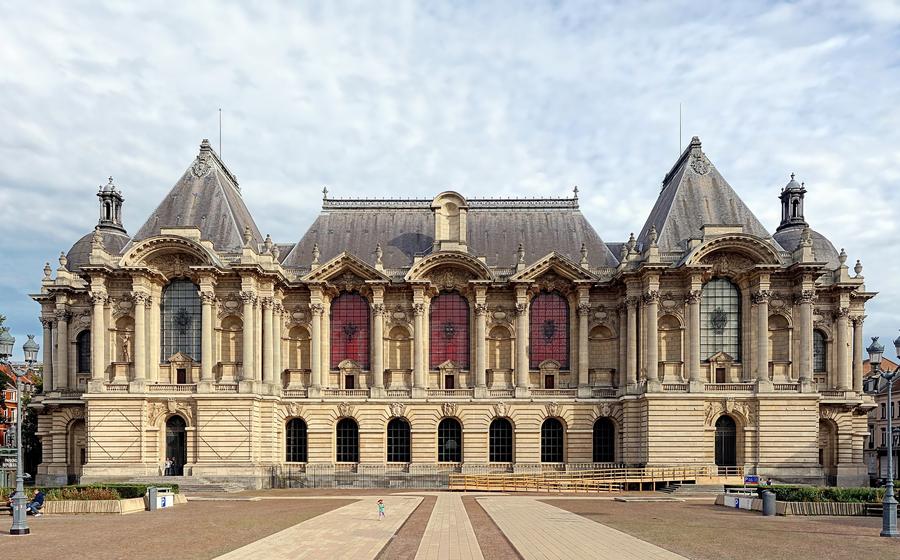
Le Palais des Beaux Arts
- Le Palais des Beaux-Arts: An Architectural Masterpiece
- Diverse Art Collection: From Old Masters to Contemporary
- Flemish and Dutch Masters: A Showcase of Northern Art
- French and Italian Paintings: Exploring Southern Masterpieces
- Sculptures and Drawings: Unveiling Hidden Treasures
- Temporary Exhibitions: A Window to Contemporary Art
- Guided Tours: Unlocking the Museum's Secrets
- Educational Programs: Inspiring the Next Generation
- Accessibility and Facilities: Ensuring a Welcoming Environment
- Museum Shop: Unique Souvenirs and Art Treasures
- Location and Transportation: Finding Your Way to the Museum
- Hours of Operation and Admission Fees: Planning Your Visit
- Food and Drink Options: Refreshing Breaks and Culinary Delights
- Nearby Attractions: Exploring Lille's Cultural Treasures
- Insider Tip: Hidden Gems and Secret Corners
Le Palais des Beaux-Arts: An Architectural Masterpiece
Nestled in the heart of Lille, the Palais des Beaux-Arts stands as a testament to the city's rich artistic heritage and architectural prowess. Built between 1885 and 1892, this Neo-Renaissance masterpiece is a stunning example of 19th-century architecture, showcasing the grandeur and elegance of the period.
The museum's striking facade, adorned with intricate carvings and sculptures, captivates visitors from afar. The grand entrance, flanked by imposing columns and topped by an elaborate pediment, sets the tone for the artistic journey that awaits within. The building's impressive dome, a symbol of architectural triumph, dominates the skyline, adding to the museum's majestic presence.
Constructed using local materials, including red bricks and limestone, the Palais des Beaux-Arts seamlessly blends into the surrounding cityscape. The harmonious fusion of architectural styles, from Gothic to Renaissance, creates a captivating visual spectacle that transports visitors to a bygone era.
Meticulously restored in recent years, the museum has regained its former glory. The restoration efforts have breathed new life into the building, preserving its intricate details and ensuring that this architectural gem continues to inspire and awe generations to come.
Diverse Art Collection: From Old Masters to Contemporary
The Palais des Beaux-Arts in Lille boasts an extensive and diverse collection of paintings, sculptures, and drawings that spans various artistic periods, from the Renaissance to modern art. Among the highlights of the collection are works by renowned Flemish and Dutch masters, such as Jan van Eyck, Pieter Bruegel the Elder, and Rembrandt. The museum also houses an impressive collection of French and Italian paintings from various periods, including works by Nicolas Poussin, Claude Monet, and Eugène Delacroix.
The collection offers a comprehensive overview of the development of European art, allowing visitors to trace the evolution of artistic styles and techniques through the centuries. The museum's curators have carefully selected works that represent the major artistic movements and schools of thought, providing visitors with a deeper understanding of the history of art.
Whether you are a seasoned art enthusiast or a casual visitor, the Palais des Beaux-Arts in Lille offers a rich and rewarding experience. With its diverse collection of masterpieces, the museum invites you on a journey through the ages, allowing you to discover the genius and creativity of some of the greatest artists in history.
Flemish and Dutch Masters: A Showcase of Northern Art
The Palais des Beaux-Arts in Lille houses a remarkable collection of Flemish and Dutch paintings, offering a comprehensive insight into the Northern Renaissance and Baroque periods. These works showcase the exceptional craftsmanship and innovative techniques of the region's most celebrated artists.
One of the highlights of the collection is the "Ghent Altarpiece" by Jan van Eyck, a masterpiece of the Early Netherlandish school. This iconic polyptych depicts biblical scenes with exquisite detail and vibrant colors, showcasing van Eyck's groundbreaking use of oil paints. Another must-see is "The Fall of Icarus" by Pieter Bruegel the Elder, a captivating depiction of the Greek myth rendered in Bruegel's characteristically earthy and realistic style.
The museum also boasts an impressive collection of works by Rembrandt, including his poignant self-portraits and biblical scenes. His mastery of light and shadow, known as chiaroscuro, is evident in these works, which capture the essence of the human condition with profound emotional depth.
These Flemish and Dutch masterpieces not only provide a glimpse into the artistic heritage of the region but also highlight the significant contribution of Northern artists to the development of European art history. Their works continue to captivate and inspire visitors, making the Palais des Beaux-Arts a must-visit destination for art enthusiasts worldwide.
French and Italian Paintings: Exploring Southern Masterpieces
The Palais des Beaux-Arts in Lille boasts an impressive collection of French and Italian paintings spanning various periods and artistic styles. This section of the museum offers a journey through the evolution of art from the Renaissance to Neoclassicism, showcasing works by renowned masters from both countries.
Among the French paintings, visitors can admire the elegant and serene landscapes of Nicolas Poussin, whose works exemplify the classical ideals of the 17th century. Claude Monet's vibrant and impressionistic depictions of nature provide a stark contrast, capturing the fleeting effects of light and atmosphere. Eugène Delacroix's dramatic and emotionally charged paintings, characterized by bold colors and dynamic compositions, represent the Romantic movement of the 19th century.
The Italian collection, on the other hand, features masterpieces from the Renaissance and Baroque periods. Visitors can marvel at the exquisite detail and realism of paintings by Sandro Botticelli, whose works embody the grace and beauty of the early Renaissance. Caravaggio's dramatic use of light and shadow, capturing intense moments of human emotion, exemplifies the Baroque style.
These French and Italian paintings not only showcase the diversity of artistic styles and techniques but also highlight the significant contributions of these two countries to the development of Western art. Whether it's the serene landscapes of Poussin, the vibrant colors of Monet, the emotional intensity of Delacroix, or the masterful techniques of Botticelli and Caravaggio, this collection offers a captivating journey through the history of art.
Sculptures and Drawings: Unveiling Hidden Treasures
Beyond the paintings, the Palais des Beaux-Arts is home to a remarkable collection of sculptures and drawings that offer a diverse representation of artistic techniques and styles. These works provide a glimpse into the creative process and showcase the talents of renowned sculptors and draftsmen.
Among the highlights of the sculpture collection is Auguste Rodin's "The Thinker," a bronze masterpiece that captures the essence of contemplation and introspection. Camille Claudel's "The Waltz" is another notable work, showcasing her mastery of movement and emotion through the intertwined figures of two dancers.
The museum's collection of drawings is equally impressive, featuring works by masters like Albrecht Dürer, Rembrandt, and Edgar Degas. These drawings offer a glimpse into the artists' initial ideas and preparatory sketches, providing valuable insights into their creative process.
Whether it's the intricate details of a Rodin sculpture or the delicate lines of a Degas drawing, these works offer a unique perspective on the artistic journey and complement the museum's already rich collection.
Temporary Exhibitions: A Window to Contemporary Art
The Palais des Beaux-Arts in Lille not only houses a permanent collection of masterpieces but also presents a dynamic program of temporary exhibitions. These exhibitions provide a platform for contemporary art and emerging artists, showcasing innovative and thought-provoking works that challenge and inspire.
In recent years, the museum has hosted critically acclaimed exhibitions featuring artists such as Ai Weiwei, Yayoi Kusama, and David Hockney. These exhibitions have attracted visitors from around the world, generating buzz and excitement in the art community.
By presenting temporary exhibitions, the Palais des Beaux-Arts remains at the forefront of contemporary art, offering visitors a glimpse into the latest trends and developments in the art world. These exhibitions also contribute to the museum's mission of promoting artistic expression and fostering a dialogue between artists and the public.
Whether you are a seasoned art enthusiast or simply curious to explore new artistic perspectives, the temporary exhibitions at the Palais des Beaux-Arts are not to be missed. They offer a unique opportunity to engage with cutting-edge contemporary art and discover the next generation of artistic talent.
Guided Tours: Unlocking the Museum's Secrets
Enrich your visit to the Palais des Beaux-Arts by embarking on a guided tour. Led by knowledgeable and passionate museum guides, these tours offer a deeper dive into the museum's collection and history. Choose from a variety of tour options, including general overviews that provide a comprehensive introduction to the museum's highlights, or thematic tours that focus on specific periods, artists, or artworks.
The expertise of the museum guides brings the collection to life, as they share insights into the artistic techniques, historical context, and cultural significance of the works on display. Guided tours are an excellent way to gain a deeper understanding of the museum's treasures and to ask questions about the collection.
Whether you're an art enthusiast, a history buff, or simply curious to learn more about the Palais des Beaux-Arts, a guided tour is an invaluable experience. Enhance your visit and unlock the museum's secrets with the guidance of these knowledgeable experts.
Educational Programs: Inspiring the Next Generation
Le Palais des Beaux-Arts is committed to art education and outreach, offering a range of educational programs designed to inspire and engage young minds. These programs aim to foster a love for art and culture, while also developing critical thinking skills and creativity.
The museum offers a variety of educational programs tailored to different age groups and interests. Workshops, for example, provide hands-on experiences where participants can explore different art techniques and create their own artworks. Lectures and talks by experts in art history and conservation offer insights into the museum's collection and the broader world of art.
School visits are a popular program, allowing students to engage with the museum's collection in a structured and educational setting. Guided tours specifically designed for school groups help students understand the historical and artistic significance of the artworks, while also encouraging them to ask questions and develop their own interpretations.
These educational programs play a vital role in nurturing the next generation of art enthusiasts and practitioners. By providing opportunities for hands-on learning, critical thinking, and creative expression, the museum helps to cultivate a vibrant and engaged cultural community.
Accessibility and Facilities: Ensuring a Welcoming Environment
The Palais des Beaux-Arts is committed to creating a welcoming and inclusive environment for all visitors. The museum's accessibility features ensure that everyone can enjoy the art and culture it offers. Wheelchair ramps and elevators provide easy access to all floors, making it convenient for visitors with mobility challenges to navigate the museum.
Audio guides are available in multiple languages, providing visitors with a comprehensive and personalized experience. The museum also offers guided tours designed for visitors with visual or hearing impairments. These tours use touch and audio descriptions to enhance the understanding of the artworks.
Families are welcomed at the Palais des Beaux-Arts with a variety of amenities. Strollers can be rented on-site, and there is a dedicated family room where parents can relax and change diapers. The museum also hosts regular family-friendly events and workshops, providing a fun and educational environment for children to engage with art and creativity.
The Palais des Beaux-Arts recognizes that everyone has unique needs and preferences. The museum staff is dedicated to providing assistance to all visitors, ensuring that they have a comfortable and enjoyable experience. Whether it's providing information about the collection, recommending accessible routes, or arranging for special accommodations, the staff is committed to making the museum accessible and welcoming to everyone.
Museum Shop: Unique Souvenirs and Art Treasures
As you exit the Palais des Beaux-Arts, don't forget to visit the museum shop, a treasure trove of unique souvenirs and art-inspired merchandise. Here, you can find a curated selection of items that celebrate the museum's collection and its rich artistic heritage.
From exquisite art prints and postcards to beautifully crafted books and catalogs, the museum shop offers a range of souvenirs that allow you to take a piece of the museum experience home with you. Whether you're looking for a memento of your visit or a thoughtful gift for an art enthusiast, you're sure to find something special here.
The shop also features a collection of exclusive items inspired by the museum's masterpieces, such as jewelry, scarves, and home décor. These unique creations are designed to bring the beauty and artistry of the museum's collection into your everyday life.
By making a purchase at the museum shop, you not only support the museum and its mission to preserve and promote art, but you also contribute to the continuation of its educational and outreach programs. So, take some time to browse the museum shop and discover the treasures that await.
Location and Transportation: Finding Your Way to the Museum
The Palais des Beaux-Arts is conveniently located in the heart of Lille, at Place de la République. Its central position makes it easily accessible by various transportation options.
For those arriving by public transport, the museum is well-served by metro and bus lines. The République - Beaux-Arts metro station is just a few steps away, providing direct access from different parts of the city. Additionally, several bus lines stop nearby, offering convenient connections from various neighborhoods.
If you prefer to drive, the museum offers limited on-site parking for a fee. However, due to its central location, finding street parking in the surrounding area can be challenging. Consider using public transportation or alternative parking options to avoid any inconvenience.
For those who enjoy exploring the city on two wheels, the museum provides designated bicycle parking spaces. Lille has an extensive network of bike lanes and rental options, making it a cyclist-friendly city. Renting a bike is an excellent way to combine sightseeing with exercise and explore the city's charming streets.
Hours of Operation and Admission Fees: Planning Your Visit
Planning a visit to the Palais des Beaux-Arts in Lille requires some essential information regarding hours of operation and admission fees. The museum's doors are open to the public from Tuesday to Sunday, allowing visitors to immerse themselves in the world of art during these days. However, it is important to note that the museum is closed on Mondays except on public holidays, when it remains open. This closure allows the museum staff to dedicate time to preserving and caring for the precious artworks within its walls.
Admission to the Palais des Beaux-Arts is subject to a fee, ensuring the upkeep and maintenance of this cultural treasure. Adults are required to pay a standard admission fee, while children and students can benefit from reduced rates. There are also special concessions available for seniors and groups, making the museum accessible to individuals from all walks of life. Additionally, the museum offers free admission on the first Sunday of each month, providing an excellent opportunity for budget-conscious visitors or those seeking a spontaneous cultural experience.
Prior planning is essential to make the most of your visit to the Palais des Beaux-Arts. Consulting the museum's website or contacting them directly for further information regarding hours of operation and admission fees is highly recommended. This foresight will ensure a smooth and enjoyable visit, allowing you to fully appreciate the artistic wonders that await within the museum's walls.
Food and Drink Options: Refreshing Breaks and Culinary Delights
For those seeking refreshment and sustenance during their museum visit, the Palais des Beaux-Arts offers a welcoming café that provides a delightful culinary experience. The café's menu features a tempting array of light snacks, delectable meals, and refreshing beverages, ensuring that visitors can satisfy their appetites without leaving the museum's premises.
Whether in need of a quick pick-me-up or a leisurely lunch break, the café provides a comfortable and stylish setting to relax and recharge. Visitors can savor freshly baked pastries, indulge in gourmet sandwiches or salads, and sip on specialty coffees or revitalizing teas. The café's menu also caters to those with dietary restrictions, offering vegetarian and gluten-free options to ensure an inclusive dining experience.
The museum's café not only provides nourishment but also enhances the overall visitor experience. By offering a convenient and enjoyable dining option within the museum, visitors can seamlessly integrate their culinary needs with their exploration of the art collection. This seamless integration allows visitors to maximize their time at the Palais des Beaux-Arts, ensuring a fulfilling and well-rounded museum experience.
Nearby Attractions: Exploring Lille's Cultural Treasures
The Palais des Beaux-Arts is strategically located in the heart of Lille, surrounded by a wealth of cultural attractions that enhance the visitor experience. Within a short walking distance, you can immerse yourself in the city's rich history and vibrant art scene.
Place de la République: Just a stone's throw away from the museum, you'll find the majestic Place de la République, the central square of Lille. Admire the grandeur of the Vieille Bourse, a 17th-century stock exchange with its unique Flemish Renaissance architecture.
Musée de l'Hospice Comtesse: This former 12th-century hospital is now a museum that takes you back in time. Explore its fascinating exhibits on Lille's history, art, and religious heritage, including medieval sculptures and tapestries.
Cathédrale Notre-Dame de la Treille: A short stroll from the museum, encounter the awe-inspiring Cathédrale Notre-Dame de la Treille. Marvel at its intricate Gothic architecture, stunning stained glass windows, and the impressive Tour de la Treille, offering panoramic city views.
Le Tri Postal: Discover a former postal sorting center transformed into a vibrant cultural hub. Le Tri Postal hosts contemporary art exhibitions, concerts, theater performances, and a charming indoor market, making it a must-visit for art enthusiasts.
Parc Jean-Baptiste Lebas: For a relaxing break, head to the nearby Parc Jean-Baptiste Lebas. Stroll through the tranquil gardens, admire the sculptures, and let the kids play in the playground. It's the perfect spot to unwind after a day of exploring the city's cultural treasures.
Combining your visit to the Palais des Beaux-Arts with these nearby attractions allows you to delve deeper into Lille's cultural tapestry and create a memorable and enriching experience.
Insider Tip: Hidden Gems and Secret Corners
Beyond the main galleries, the Palais des Beaux-Arts holds hidden gems that offer a unique perspective on the museum's collection. One such treasure is the Cabinet des Dessins, a treasure trove of over 10,000 drawings and prints. Here, visitors can peruse a remarkable collection of works on paper by masters like Dürer, Rembrandt, and Degas in a more intimate setting.
Another hidden gem is the sculpture garden, nestled in the heart of the museum. This tranquil oasis features a collection of sculptures from the 19th and 20th centuries, including works by Rodin, Claudel, and Maillol. Visitors can stroll through the garden, admiring the sculptures amidst the lush greenery and the serene atmosphere.
Whether it's the Cabinet des Dessins or the sculpture garden, these hidden gems offer a unique opportunity to explore the museum's collection beyond the main highlights. They provide a glimpse into the lesser-known treasures of the Palais des Beaux-Arts and enhance the overall visitor experience.
